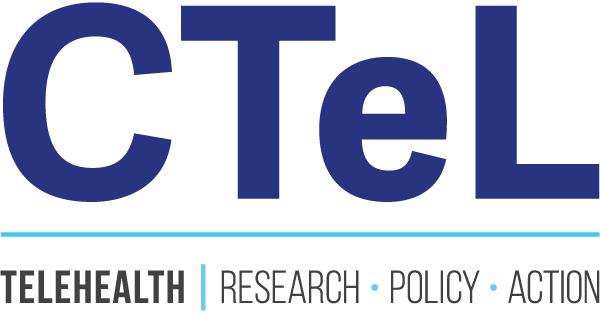HHS Restructuring: Key Changes Impacting Hospitals, Health Systems, and Telehealth Providers
The U.S. Department of Health and Human Services (HHS) has announced a major restructuring aimed at streamlining operations, improving coordination, and enhancing efficiency in delivering healthcare services. These changes will have significant implications for hospitals, health systems, and direct-to-consumer (DTC) telehealth providers. Below is an overview of the restructuring and what healthcare stakeholders need to know.
1. Creation of the Administration for a Healthy America (AHA)
HHS is consolidating multiple agencies, including the Office of the Assistant Secretary for Health (OASH), Health Resources and Services Administration (HRSA), Substance Abuse and Mental Health Services Administration (SAMHSA), Agency for Toxic Substances and Disease Registry (ATSDR), and National Institute for Occupational Safety and Health (NIOSH), into the newly formed Administration for a Healthy America (AHA).
Impact on Healthcare Providers and Telehealth:
Primary Care and Maternal Health: With an increased focus on low-income populations, hospitals and health systems should anticipate greater emphasis on community health initiatives and funding for underserved areas.
Mental Health Integration: For DTC telehealth providers, SAMHSA’s integration into AHA may streamline regulations and funding opportunities, creating a more unified approach to mental health services.
Environmental and Occupational Health: This restructuring could impact compliance and safety guidelines for hospitals, especially those managing occupational health for healthcare workers.
2. Strengthening the Centers for Disease Control and Prevention (CDC)
The Administration for Strategic Preparedness and Response (ASPR) will be transferred to the CDC, reinforcing the agency’s mission to protect public health.
Impact on Healthcare Providers and Telehealth:
Hospitals and health systems may experience a more centralized response to public health emergencies, which could improve coordination in areas such as pandemic response and disaster preparedness.
Telehealth providers dealing with public health issues, such as infectious disease management, may see improved integration of CDC guidelines into digital health platforms.
Workforce Adjustments: The CDC is expected to reduce its workforce by approximately 2,400 employees, aiming to refocus on epidemic and outbreak response, including integrating ASPR to enhance coordination.
3. New Assistant Secretary for Enforcement
A new Assistant Secretary for Enforcement will oversee the Departmental Appeals Board (DAB), Office of Medicare Hearings and Appeals (OMHA), and Office for Civil Rights (OCR) to combat waste, fraud, and abuse in federal health programs.
Impact on Healthcare Providers and Telehealth:
Hospitals and health systems should prepare for increased scrutiny in compliance with Medicare and Medicaid regulations.
Telehealth providers may face stricter enforcement regarding fraud prevention, patient data privacy, and reimbursement claims.
4. Research and Evaluation for Health Policy
HHS is merging the Assistant Secretary for Planning and Evaluation (ASPE) with the Agency for Healthcare Research and Quality (AHRQ) to create the Office of Strategy.
Impact on Healthcare Providers and Telehealth:
Hospitals and health systems will benefit from a stronger emphasis on research-backed policy decisions, potentially influencing reimbursement models and healthcare delivery frameworks.
Telehealth companies engaged in health policy advocacy or evidence-based care may gain access to more streamlined data and insights for decision-making.
5. Reorganization of the Administration for Community Living (ACL)
Programs supporting older adults and individuals with disabilities will be integrated into the Administration for Children and Families (ACF), ASPE, and Centers for Medicare and Medicaid Services (CMS).
Impact on Healthcare Providers and Telehealth:
Hospitals and long-term care providers may experience changes in funding and program administration for aging and disability services.
Telehealth services catering to older adults and individuals with disabilities might see new opportunities for reimbursement and policy alignment with CMS initiatives.
6. Workforce Reductions and Division Consolidation
Employee Reduction: HHS plans to decrease its full-time employees from 82,000 to 62,000.
Division Consolidation: The department’s 28 divisions will be merged into 15, aiming to eliminate redundancies and improve efficiency.
Regional Offices: The number of regional offices will be reduced from 10 to 5, which may affect local engagement strategies for healthcare providers.
7. Financial Implications
Cost Savings: The restructuring is projected to save approximately $1.8 billion annually, reflecting a significant budgetary impact that may influence funding allocations and reimbursement models for healthcare services.
Agency-Specific Workforce Adjustments:
FDA: A reduction of approximately 3,500 full-time employees is planned, focusing on streamlining operations without impacting drug, medical device, or food reviewers, nor inspectors.
NIH: About 1,200 positions will be cut by centralizing procurement, human resources, and communications across its 27 institutes and centers.
CMS: A reduction of roughly 300 employees aims to eliminate minor duplications without impacting Medicare and Medicaid services.
What Comes Next?
These restructuring efforts indicate a shift toward efficiency, better coordination, and increased oversight within HHS. Hospitals, health systems, and telehealth providers should stay updated on regulatory changes, funding opportunities, and compliance measures stemming from these transitions.
As these changes unfold, proactive engagement with HHS, CMS, and other key agencies will be essential for staying ahead of evolving healthcare policies and maintaining seamless service delivery in both physical and digital healthcare settings.


